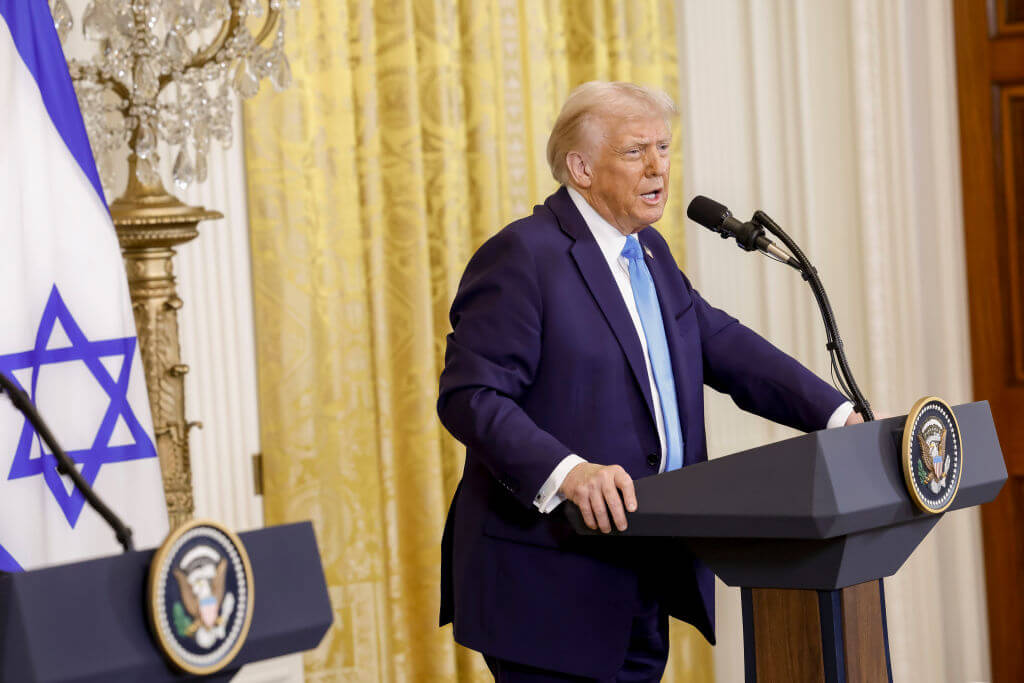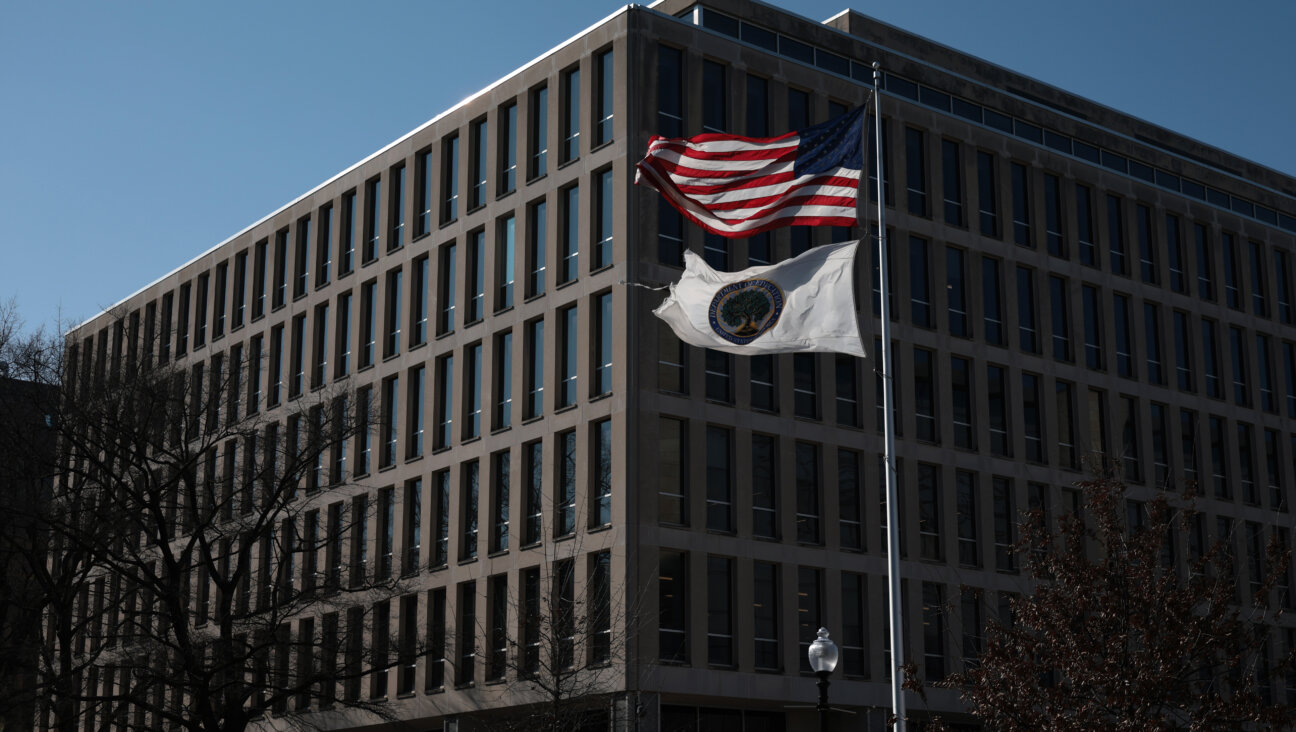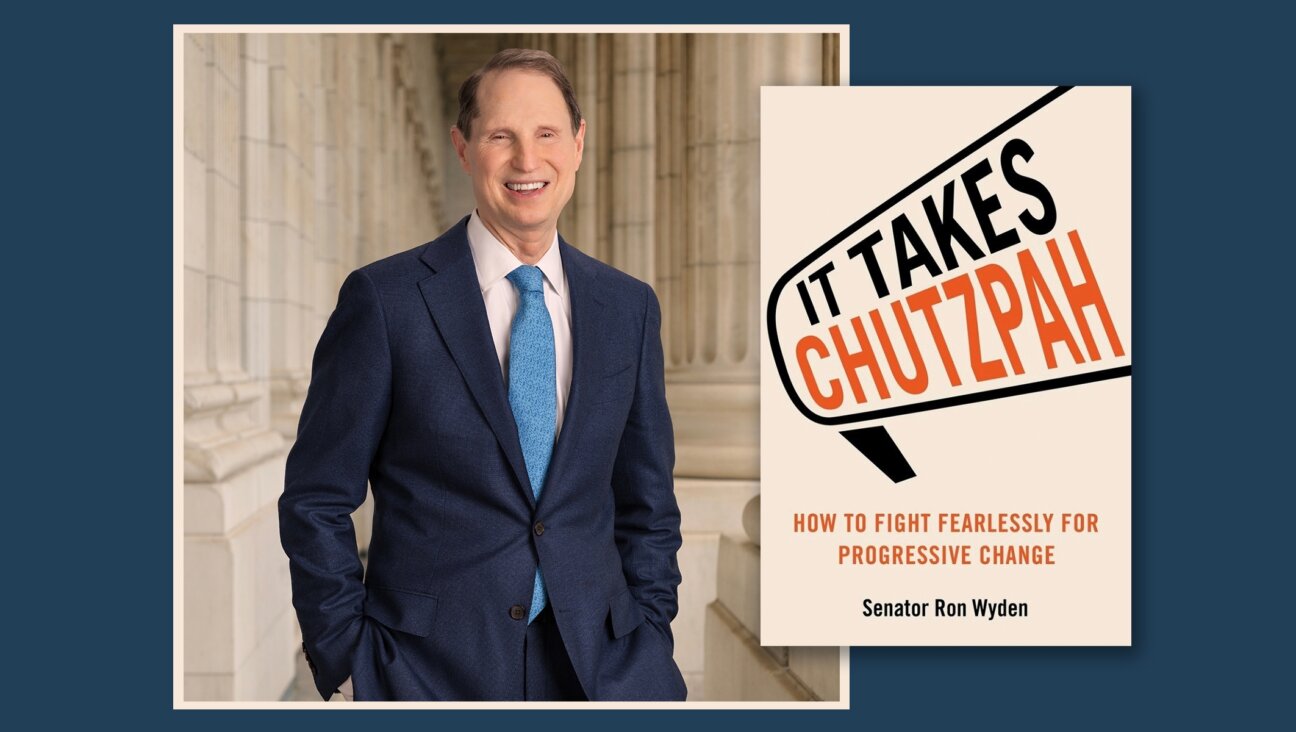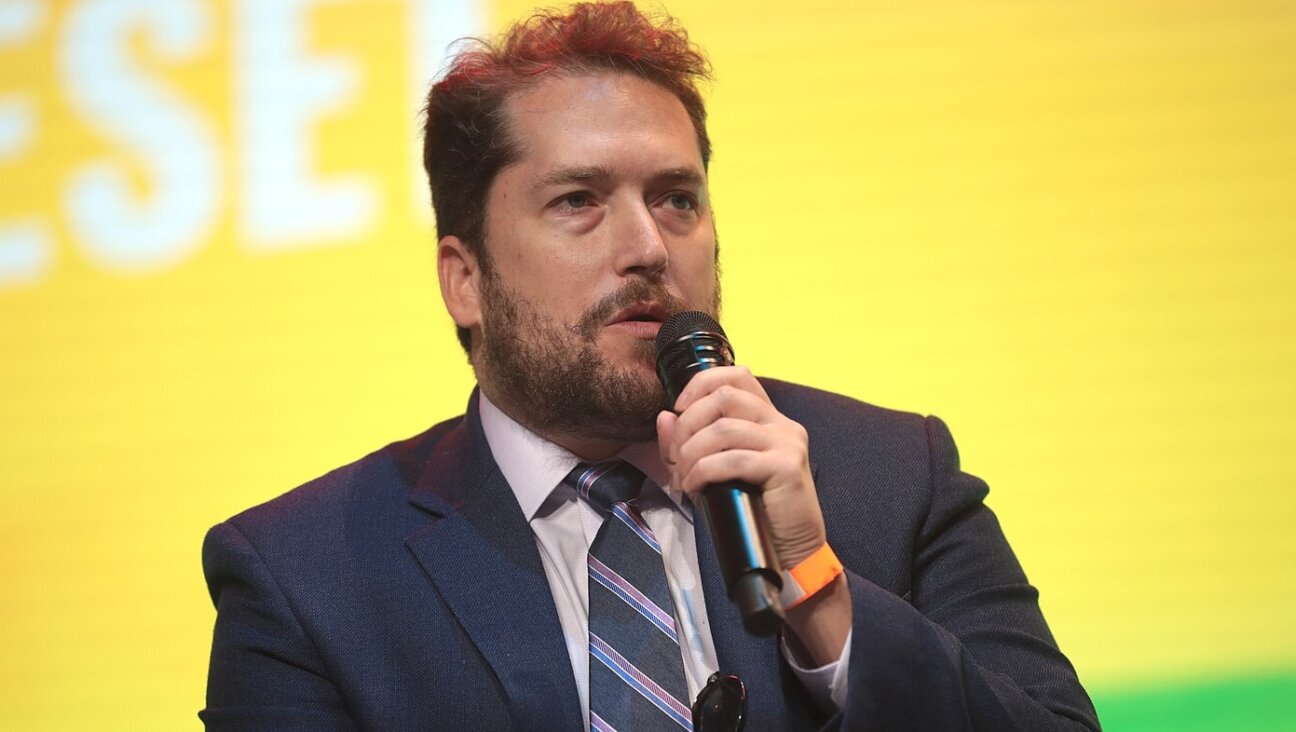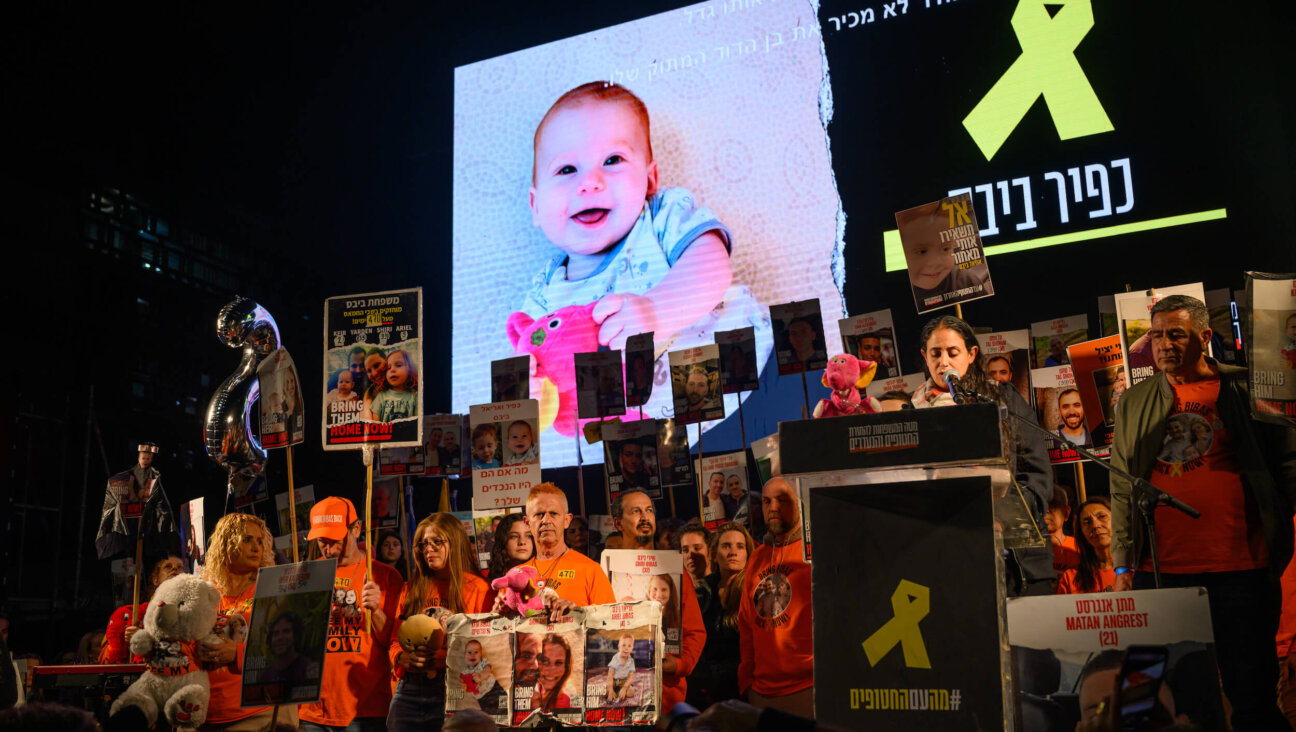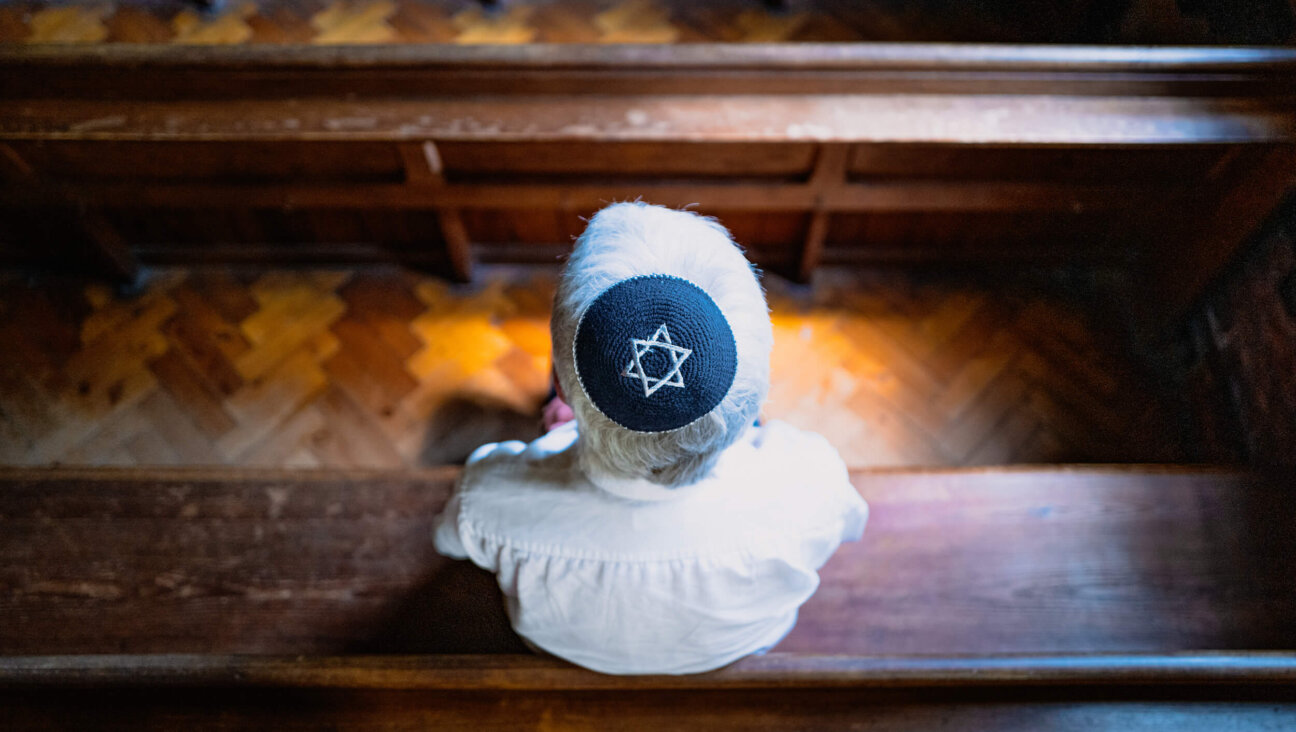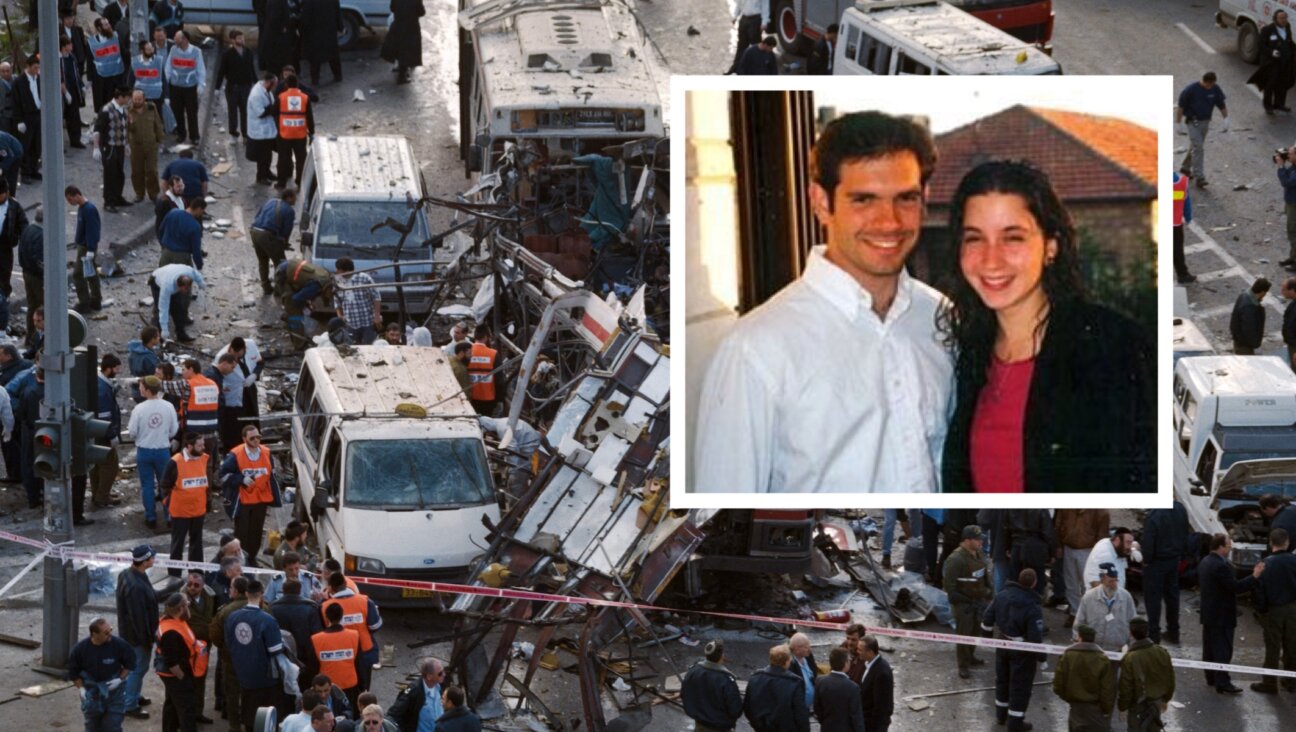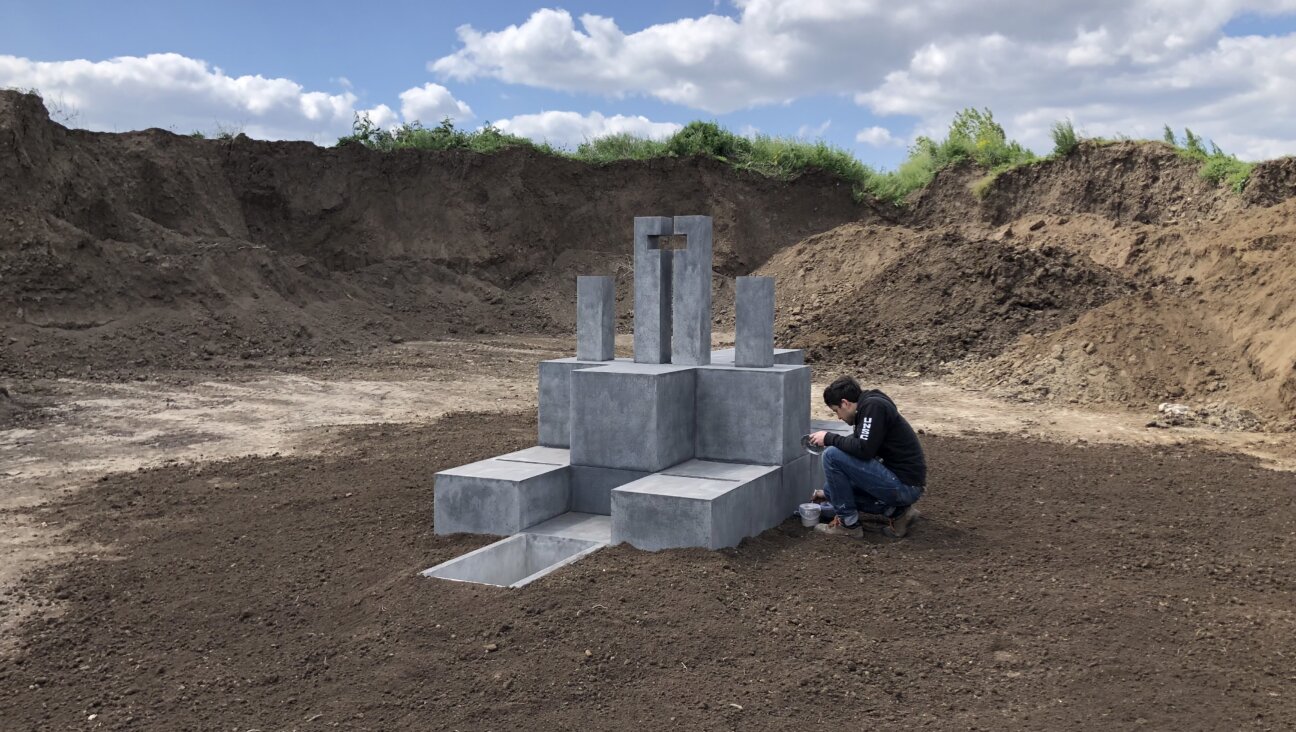Baron David de Rothschild Celebrates American Jewry

Baron Guy de Rothschild and Masha Leon in 1984. Image by Karen Leon
“I’ve come to the point in my life when I never refuse honors,” quipped Baron David de Rothschild, honorary chair of the Jewish Museum’s 26th annual Purim Ball, held on February 29 at the Waldorf-Astoria. After congratulating the museum’s director, Claudia Gould, de Rothschild said: “I’ve seen the museum in New York, and it ranks high among institutions that are important to Jews. It tells who we are and what we are.” De Rothschild added: “Anti-Semitism is a result of ignorance. I lived in a country that suffered Nazi invasion. I was born in France [at a time] when 11,000 Jewish children were deported. Thanks to my mother’s insights, I am grateful for coming to New York in 1942…. I admire [its] vibrant, successful [Jewish] community, which has inspired other communities.”
Board of trustees chairman Robert A. Pruzan welcomed nearly 500 guests, who helped raise $1.1 million for the museum. Rabbi Darcie Crystal performed the predinner blessing. Artist Izhar Patkin provided decorations — dappled white foliage shapes projected onto the walls and ceiling — inspired by the sumptuous paintings featured in the museum’s upcoming exhibition, “Edouard Vuillard: A Painter and His Muses,” which opens on May 4.
I told de Rothschild that I had met his late father, Baron Guy de Rothschild, at the UJA-Federation’s First Inaugural Dinner of the Holocaust Survivors Division, held Veterans Day in 1984. That event, held at the Sheraton Centre and chaired by Roman Kent, honored American soldiers who had liberated concentration camps 40 years earlier. James Gavin, a retired lieutenant general, accepted an award on behalf of all the U.S. Army liberators. The keynote speaker was Guy de Rothschild. He had served with the Free French Forces as a company commander and for 32 years had been chairman of France’s UJA-Federation counterpart, Le Fond Social Juifs Unifie. In his speech, Baron de Rothschild spoke of Mayer Amschel Rothschild, the dynasty’s founder, and described how the family had maintained its identity and its commitment to Judaism and Israel for eight generations. He proudly spoke of his son David, then with Le Fond Social Juifs Unifie, as “one of our own.” I had asked Guy de Rothschild if he was familiar with Sholem Aleichem’s delightful Yiddish monologue “If I Were Rothschild” — a favorite of Yiddish actors. He hadn’t heard of it, so I sent him a copy in Yiddish with an English translation.
Among this year’s Purim ball guests were former Jewish museum director Joan Rosenbaum; the event co-chairs, who were Nancy and Morris Offit, Carol and Gershon Kekst, and Fanya Gottesfeld Heller, and several noted masked guests: Francine Klagsbrun, psychiatrist Jacqueline Heller (daughter of Fanya Gottesfeld Heller), Scott Shagrin and artist Mark Podwal.
Museum of 1,000-Year History of Jews in Poland To Open in 2013
“I see many dreamers are here with us tonight — from the U.S and Poland,” Polish Consul General Ewa Junczyk-Ziomecka said at a March 1 event at New York’s Polish Consulate, celebrating the opening in 2013 of Warsaw’s Museum of the History of the Polish Jews. “A dream of survivors and Polish Jews from abroad, it has been a long time coming. Today is the beginning of the final stage of Poland’s center of Jewish Diaspora, which will rescue the 1,000-year presence of Jews in Poland. Today is the seventh day of Adar — one week left to Purim, ‘the great joy for our brothers,’ as spoken by Pope John Paul II. I have the honor to represent the government of Poland, which took on the [major] financial burden. The building is almost completed and stands opposite the monument of the ghetto fighters. The city of Warsaw has provided the land $65 million. The exhibition required $45 million, of which $26 million has already been raised.”
“We lived together for 1,000 years, Polish Jews and Polish Christians,” said Sigmund Rolat, co-chairman of the North American Council of the Museum of the History of Polish Jews. Rolat was born in Czestochowa, Poland, in 1930. He survived the Holocaust in hiding and in Hasag Pelcery, a forced labor camp, and later went on to found an international export and finance company called Oxford International Corp. Rolat, a philanthropist, explained: “A third of [Czestochowa] was Jewish. It was also a city to which 5 to 6 million Polish pilgrims come each year to pray at Jasna Gora [which means “shining mountain”], site of the Black Madonna. It is where the Jews built the first textile mill, first paper mill and first electric plant. Its first concert hall and theater were built by Jewish philanthropists.”
“This is not a museum based on objects,” Core Exhibition Program Director Barbara Kirshenblatt-Gimblett said. “Think of film, theater and environment transmitting this history… the recovery of lost objects, such as a replication of a 17th- to 18th-century wooden synagogue, a symbol of Jewish Polish creativity. On a smaller scale you will be able to see how it was built. The first mention of Jews in Poland is in Arabic by a Jewish merchant — a Sephardic Jew. The period 1918 to 1939 was Poland’s Jewry’s second Golden Age…. More Yiddish books were published in Poland than anywhere else. There were the Zionists, Bundists and Agudath Israel creating a total way of life. The museum has set aside a special section for Vilna.” And she added: “Before the war, you could not stem the thrust of assimilation. In fact the [Vilna YIVO Institute for Jewish Research] had an essay contest about assimilation!”
Among the evening’s special guests were Marian Turski, deputy chairman of the Association of the Jewish Historical Institute of Poland, and Victor Markowicz, co-chairman of the North American Council of the Museum of the History of Polish Jews. Born in Siberia to Polish parents who were deported to Poland, where he spent his childhood, Markowicz went on to become one of the founders of the modern gaming industry. Following studies at Haifa’s Technion Institute, he was on the team that designed Israel’s first commercial computer, the Elbit-100. A Life Master bridge player who races thoroughbred horses, he is co-chairman of GTECH Corp., a world-leading designer and supplier of computerized lottery systems.
Park East Synagogue’s senior rabbi, Arthur Schneier, declared, “Polish Jews contributed not only to Poland, but to European culture.” The evening concluded with Joseph Malovany, Fifth Avenue Synagogue’s cantor, singing, in archaic Polish, a wrenching prayer for Poland, set to Chopin’s “Rainbow Prelude.” The piece was originally performed by Polish-Jewish tenor Jan Kiepura at a 1942 at Carnegie Hall concert in support of Poland.
A message from our Publisher & CEO Rachel Fishman Feddersen

I hope you appreciated this article. Before you go, I’d like to ask you to please support the Forward’s award-winning, nonprofit journalism so that we can be prepared for whatever news 2025 brings.
At a time when other newsrooms are closing or cutting back, the Forward has removed its paywall and invested additional resources to report on the ground from Israel and around the U.S. on the impact of the war, rising antisemitism and polarized discourse.
Readers like you make it all possible. Support our work by becoming a Forward Member and connect with our journalism and your community.
— Rachel Fishman Feddersen, Publisher and CEO







